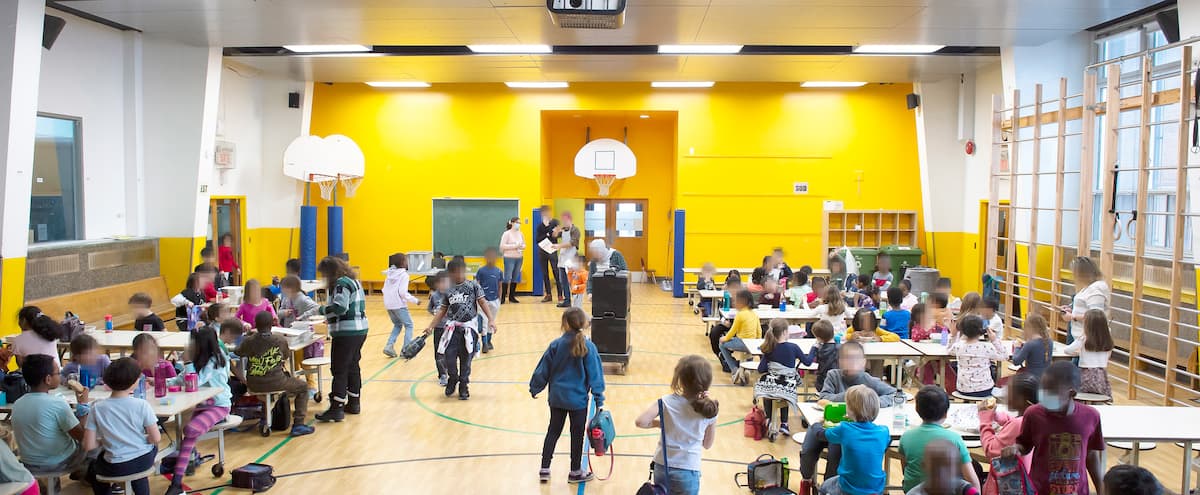The students’ lunch must be provided in all schools, argue several speakers who deplore the great delay of Canada in this file, which would cost approximately $5 billion per year.
• Read also: Thousands of Quebec students do not have enough to eat at school
“We need to have a safety net in all schools so that children have access to food and that they can be in optimal conditions to learn, regardless of their parents’ income”, thunders Thibaud Liné, general manager of the Cantine pour tous, which subsidizes meals in 39 schools in Quebec.
Canada, bottom of the class
The gloomy fact is that Canada is the only G7 country that does not have a universal food program. The example of the canteens in France is well known, where all the pupils are fed every day at low cost.
“Canada is lagging behind,” laments Mr. Liné.
Currently, only 20% of Canadian students have access to a reduced price meal at school, according to the federal Department of Employment and Social Development.
For many, a universal system of meals with snacks (free or at low cost depending on the parents’ income) is fundamental in elementary and secondary school.
“The socio-economic benefits are not even up for discussion, they are obvious. Why hasn’t this been done? I ask myself the question. The financial means are there, reacts Salmata Ouedraogo, professor of economics at the University of Quebec in Chicoutimi. We will have the program when we have the political will. »
In fact, every dollar invested in a school feeding program yields up to $9 in returns, a recent study by the World Food Program estimates.
According to the Coalition for Healthy Eating, which brings together 200 organizations in the country, implementing a universal meal system would cost approximately $5.4 billion in Canada (based on a unit cost of meals of $5).
“We are not starting from zero. We don’t want to reinvent the wheel, there are already many relevant and successful initiatives, assures Danie Martin, coordinator of the Coalition. But, the department’s money could be better harmonized. He goes to different places, it is not equal for all schools. »
According to Mr. Liné, food aid organizations are a perfect solution for schools, which do not have the resources to manage such programs.
“We develop turnkey solutions, it’s a proven solution. We take care of the problems, of everything,” he says.
In Quebec, the Ministry of Education pays $39.4 million in school snacks this year, and also subsidizes aid organizations.
On the federal side, a national school feeding policy is in preparation. However, no budget envelope has yet been announced.
Same for all
Furthermore, all emphasize the importance of a universal system rather than targeting low-income students, to avoid stigmatization. They also praise the merits of a common meal, which brings students together and introduces them to healthy foods.
“When it’s part of the routine, we see children discovering food, eating with appetite, sharing a meal with their friends. Something is setting in,” adds Claudine Dessureault, Purchasing and Inventory Advisor at the Breakfast Club of Quebec.
